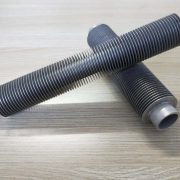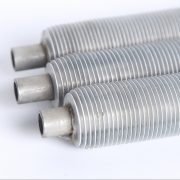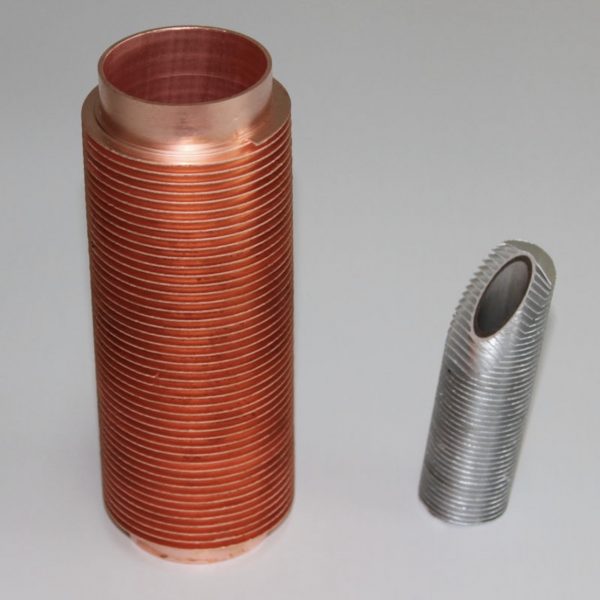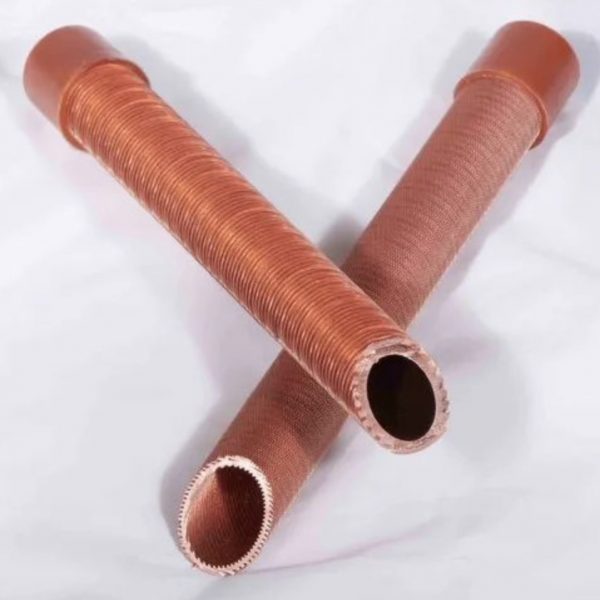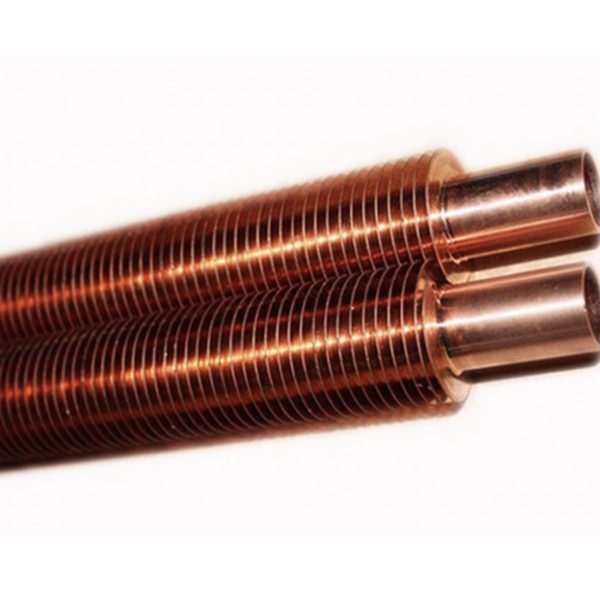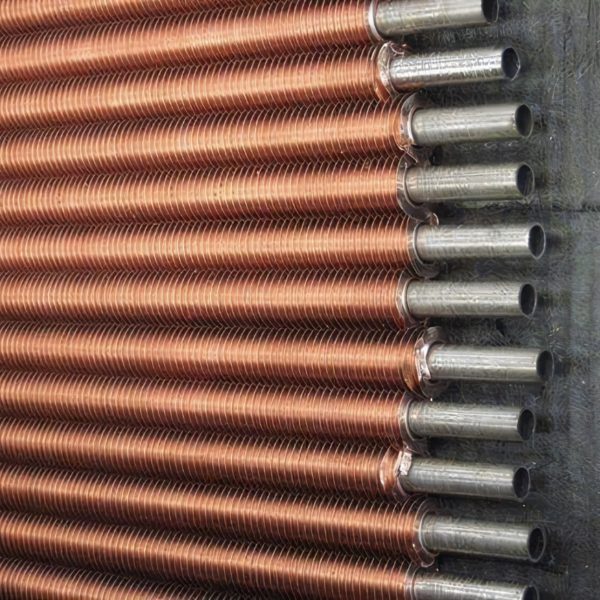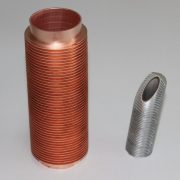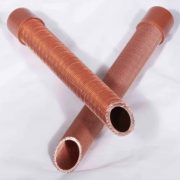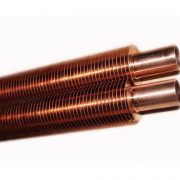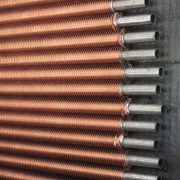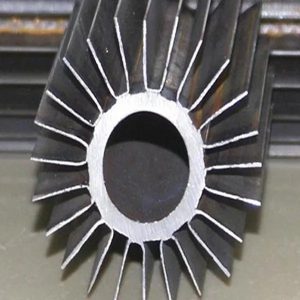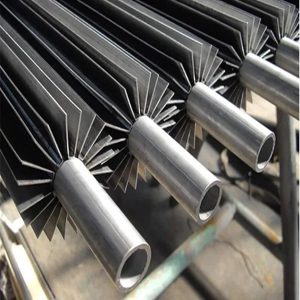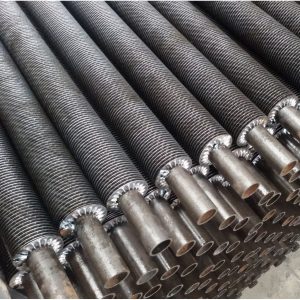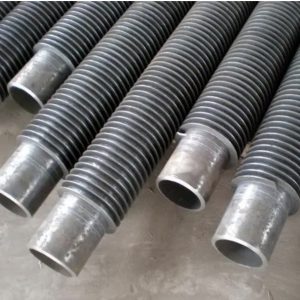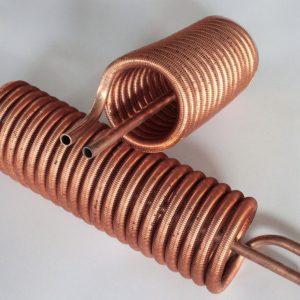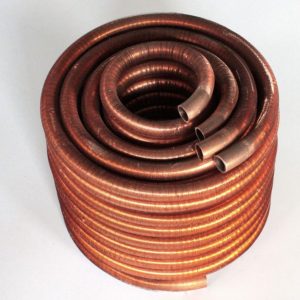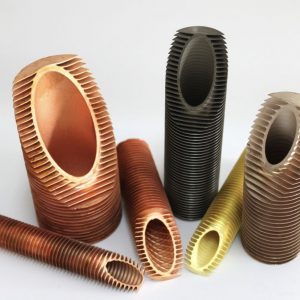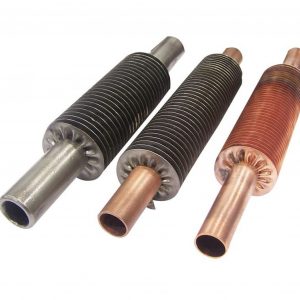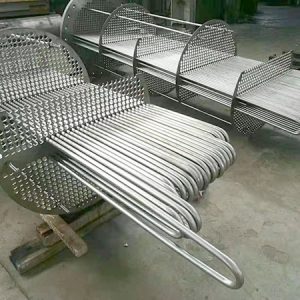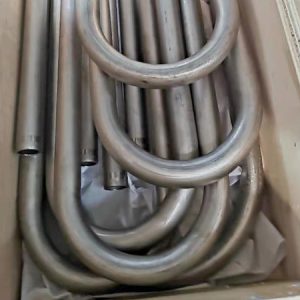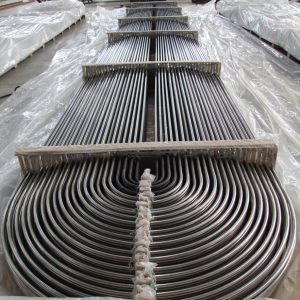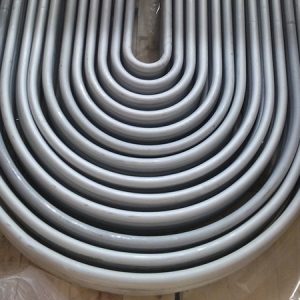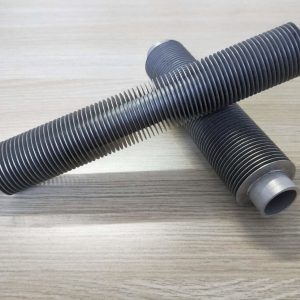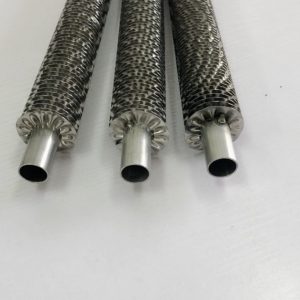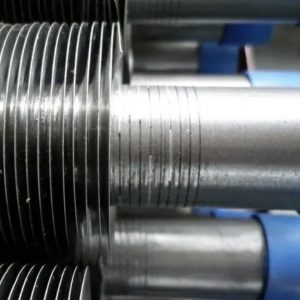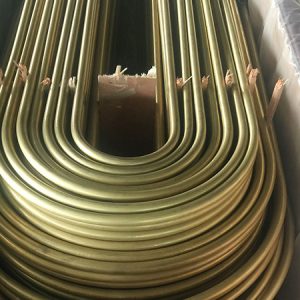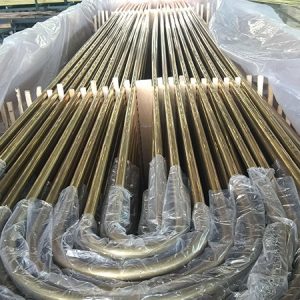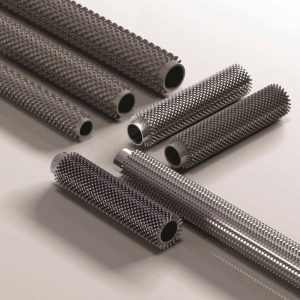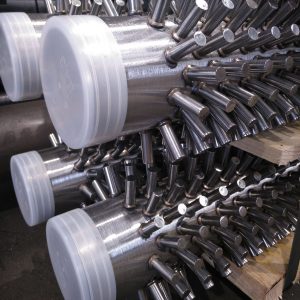أنبوب الزعنفة النحاسية
النحاس عنصر معدني, والنحاس النقي معدن ناعم. السطح برتقالي محمر مع بريق معدني عندما يتم قطعه مفتوحا, ومادته البسيطة أرجواني-أحمر. ليونة جيدة, الموصلية الحرارية العالية والتوصيل الكهربائي, لذلك فهي المادة الأكثر استخداما في الكابلات والمكونات الكهربائية والإلكترونية.
ويمكن أيضا أن تستخدم كمواد بناء ويمكن أن تتكون من العديد من السبائك. سبائك النحاس لها خصائص ميكانيكية ممتازة ومقاومة كهربائية منخفضة. أهمها البرونز والنحاس الأصفر. بالإضافة, النحاس هو أيضا معدن متين يمكن إعادة تدويره عدة مرات دون المساس بخصائصه الميكانيكية.
الأنابيب النحاسية (المعروف أيضا باسم الأنابيب النحاسية الحمراء) يشيع استخدامها في أنابيب مياه الصنبور, أنابيب التدفئة والتبريد, ويمكن استخدامها في بيئات مختلفة. تجمع الأنابيب النحاسية بين مزايا الأنابيب المعدنية وغير المعدنية في أنظمة المياه الباردة والساخنة. الأنابيب النحاسية مقاومة لدرجات الحرارة العالية ويمكن استخدامها في مجموعة متنوعة من البيئات. مقارنة مع هذا, أوجه القصور في العديد من مواد الأنابيب الأخرى واضحة.
- وصف
- The advantages of finned tubes
- استخبار
النحاس عنصر معدني, والنحاس النقي معدن ناعم. السطح برتقالي محمر مع بريق معدني عندما يتم قطعه مفتوحا, ومادته البسيطة أرجواني-أحمر. ليونة جيدة, الموصلية الحرارية العالية والتوصيل الكهربائي, لذلك فهي المادة الأكثر استخداما في الكابلات والمكونات الكهربائية والإلكترونية.
ويمكن أيضا أن تستخدم كمواد بناء ويمكن أن تتكون من العديد من السبائك. سبائك النحاس لها خصائص ميكانيكية ممتازة ومقاومة كهربائية منخفضة. أهمها البرونز والنحاس الأصفر. بالإضافة, النحاس هو أيضا معدن متين يمكن إعادة تدويره عدة مرات دون المساس بخصائصه الميكانيكية.
الأنابيب النحاسية (المعروف أيضا باسم الأنابيب النحاسية الحمراء) يشيع استخدامها في أنابيب مياه الصنبور, أنابيب التدفئة والتبريد, ويمكن استخدامها في بيئات مختلفة. تجمع الأنابيب النحاسية بين مزايا الأنابيب المعدنية وغير المعدنية في أنظمة المياه الباردة والساخنة. الأنابيب النحاسية مقاومة لدرجات الحرارة العالية ويمكن استخدامها في مجموعة متنوعة من البيئات. مقارنة مع هذا, أوجه القصور في العديد من مواد الأنابيب الأخرى واضحة.
For example, the galvanized steel pipes used in residential buildings in the past are very easy to rust. If they are not used for a long time, the tap water will turn yellow and the water flow will become small. بالإضافة, the strength of some materials will decrease rapidly at high temperatures, which may cause unsafe risks when used in hot water pipes. The melting point of copper is as high as 1083 degrees Celsius, and the temperature of the hot water system is negligible for copper pipes.
China Copper Pipe is the best one and is the best connecting pipe. The copper pipe is fire-resistant and heat-resistant, and can maintain its shape and strength under high temperature without aging.
The pressure resistance of copper pipes is several times or even dozens of times that of plastic pipes and aluminum-plastic pipes. It can withstand the highest water pressure in today’s buildings. In the hot water environment, with the extension of service life, the pressure capacity of plastic pipes significantly decreases, and the mechanical properties of copper pipes remain unchanged in all thermal temperature ranges, so their pressure resistance will not decrease, nor there will be aging.
Copper finned tubes manufacturing process
Pipe line——compressing or rolling——strip peeling——washing——pressure test——blast blowing——packaging. The cold machining process of fins provides excellent mechanical resistance , fins are strong and have strong resistance to atmospheric corrosion, الخ. The pressure required to extrude the fin from the aluminum sleeve creates an excellent “pressure bond” between the two materials. بالإضافة, the aluminum finned material completely surrounds the metal of the tube, so there is no risk of electrical corrosion at the fin root (between the tube and the fin). All of these advantages ensure the most stable performance over time of all other fin types.
Copper finned tube applications
Copper finned tubes products are widely used in petrochemical, power plant and power plant renovation, air conditioning and refrigeration, boilers, finned tube economizers and air preheaters.
The advantages of finned tubes
Transferring heat from a hot fluid into a colder fluid through a tube wall is the reason many of us use finned tubes. But you may ask, what is the major advantage of using a finned tube? Why can’t you just use a regular tube to make this transfer? Well you can but the rate will be much slower.
By not using a finned tube the outside surface area is not significantly greater than the inside surface area. Because of that, the fluid with the lowest heat transfer coefficient will dictate the overall heat transfer rate. When the heat transfer coefficient of the fluid inside the tube is several times larger than that of the fluid outside the tube the overall heat transfer rate can be greatly improved by increasing the outside surface area of the tube.
Finned tubes increase outside the surface area. By having a finned tube in place, it increases the overall heat transfer rate. This then decreases the total number of tubes required for a given application which then also reduces overall equipment size and can in the long-run decrease the cost of the project. In many application cases, one finned tube replaces six or more bare tubes at less than 1/3 the cost and 1/4 the volume.
For applications that involve the transfer of heat from a hot fluid to a colder fluid through a tube wall, fin tubes are used. Usually, for an air heat exchanger, where one of the fluids is air or some other gas, the air side heat transfer coefficient will be much lower, so additional heat transfer surface area or a fin tube exchanger is very useful. The overall pattern flow of a finned tube exchanger is often crossflow, لكن, it can also be parallel flow or counterflow.
Fins are used to increase the effective surface area of heat exchanger tubing. Furthermore, finned tubes are used when the heat transfer coefficient on the outside of the tubes is appreciably lower than that on the inside. In other words, heat transferred from liquid to gas, vapor to gas, such as steam to air heat exchanger, and thermic fluid to air heat exchanger.
The rate at which such heat transfer can occur depends on three factors – [1] the temperature difference between the two fluids; [2] the heat transfer coefficient between each of the fluids and the tube wall; و [3] the surface area to which each fluid is exposed.
Finned tubes are used because they help:
Increase Heat Transfer Rate:
A finned tube exchanger typically has tubes with fins attached to the outside. Usually, there will be some liquid flowing through the inside of the tubes and air or some other gas flowing outside the tubes, where the additional heat transfer surface area due to the finned tube increases the heat transfer rate. In a crossflow fin tube exchanger, the fins will typically be radial fins and they’ll either be circular or square in shape.
Improve Heat Transfer Coefficient:
By not using a finned tube, the outside surface area is not significantly greater than the inside surface area. وبسبب هذا, the fluid with the lowest heat transfer coefficient will dictate the overall heat transfer rate. When the heat transfer coefficient of the fluid inside the tube is several times larger than that of the fluid outside the tube, the overall heat transfer rate can be greatly improved by increasing the outside surface area of the tube.
Increase Outside Surface Area:
By having a finned tube in place, it increases the overall heat transfer rate. Finned tubes increase the outside surface area. This decreases the total number of tubes required for a given application which then also reduces overall equipment size and can in the long-run decrease the cost of the project.
Finned tube heat exchangers are used in a variety of applications, and more so as industrial heat exchangers. An air heat exchanger like the evaporator coil in an air conditioning unit is typically a fin tube exchanger. Another common fin tube air heat exchanger is the car radiator. The purpose of the car radiator is to cool the hot water in the tubes with the air passing through the crossflow. On the contrary, the air conditioner evaporator coil has the purpose of cooling the air passing through it. The finned tubes that are manufactured at Kainon Boilers, use high grade carbon steel, stainless steel, copper, brass, and aluminum. Our finned tube exchangers are designed to meet the specific duty condition, temperature and pressure of the fluids.

